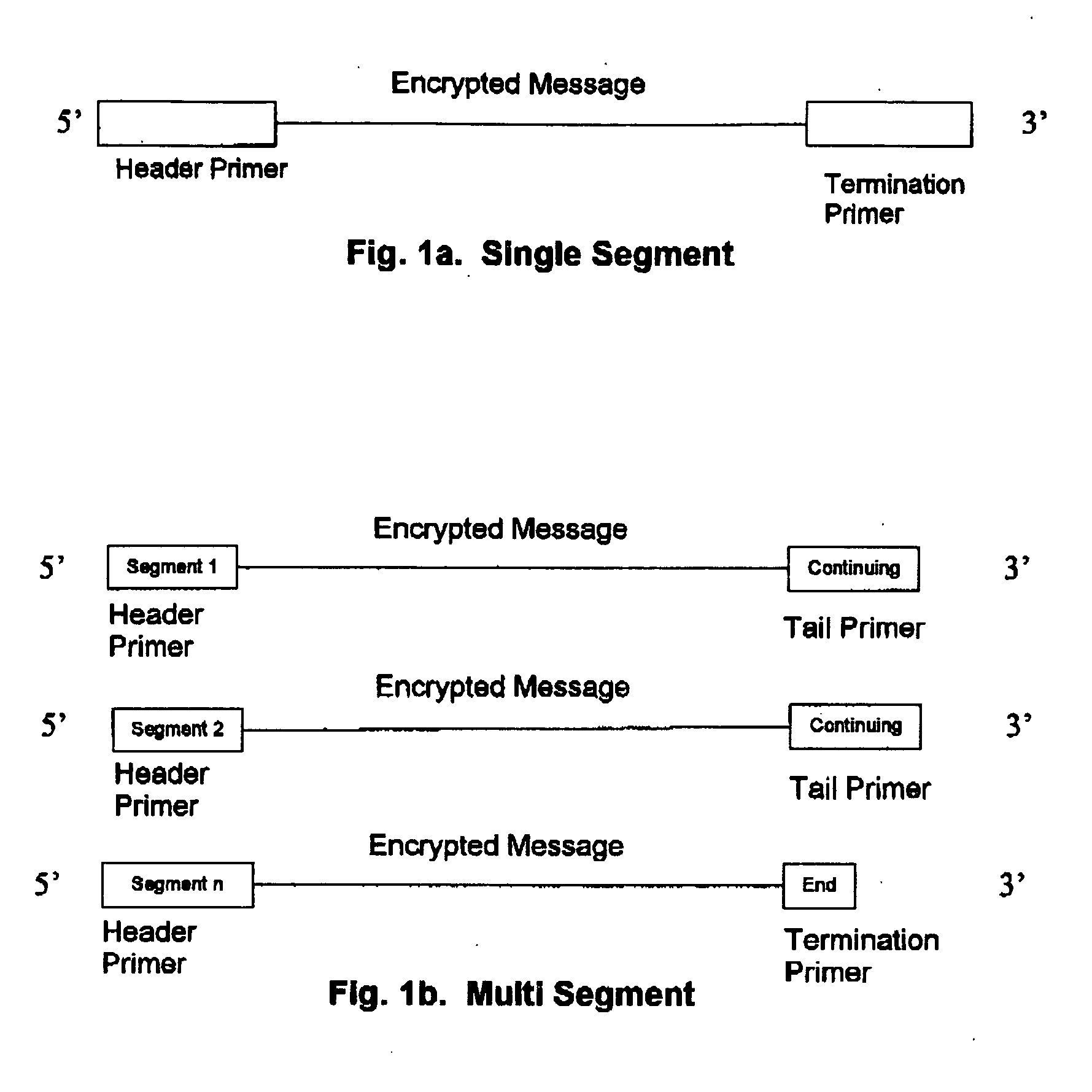Method for storing information in DNA
a technology of information storage and dna, applied in the field of storing information in dna, can solve the problems of limited scope and the inability of the clear-cut scheme to address the complete set of digital information
- Summary
- Abstract
- Description
- Claims
- Application Information
AI Technical Summary
Benefits of technology
Problems solved by technology
Method used
Image
Examples
example 1
[0023] Encryption and decryption of a textual message “CSHU” in terms of DNA bases may be defined as [0024] a) Generation of an array of 256 elements (unique abase per character i.e. ATGC, ATGA, ATGT, ATGG). These elements represent complete extended ASCII character set values. [0025] b) The input information is then encrypted character-by-character using array generated in step 1. The basis is ASCII values of each character is matched with the element no. of the array of step 1. [0026] Encryption of the text “CSIR” in terms of DNA bases may be: [0027]TATGTTTCTATTTTAC where [0028] C is represented by DNA sequence TATG [0029] S is represented by DNA sequence TTTC [0030] I is represented by DNA sequence TATT [0031] R is represented by DNA sequence TTAC [0032] c) If the information overflows the limits i.e. it cannot be synthesized in a single piece or because of any other problem, then the encrypted sequence is fragmented in a number segments. [0033] d) Encrypted segment(s) is / are the...
example 2
[0047] Some examples of DNA encryption for textual data
Digital InformationEncrypted DNA sequenceWELCOMETTAGTACATAGCTATGTACCTAACTACAWORLD PEACETTAGTACCTTACTAGCTATAAGCTTTCCTACATAGGTATGTACAINDIATATTTATCTATATATTTAGGCSIRTATGTTTCTATTTTACCSIOTATGTTTCTATTTACC
example 3
[0048] A JPEG image encrypted in term of DNA bases
[0049] In example 2, a JPEG image if Indian Flag having file size of 1981 Bytes have been encrypted in terms of DNA bases. A total of 7924 DNA bases (4-base / Byte) are required to encrypt the complete image. Since the sequence is large, fragmenting the sequence into smaller segments is required.
PUM
| Property | Measurement | Unit |
|---|---|---|
| volume | aaaaa | aaaaa |
| size | aaaaa | aaaaa |
| length | aaaaa | aaaaa |
Abstract
Description
Claims
Application Information
 Login to View More
Login to View More - R&D
- Intellectual Property
- Life Sciences
- Materials
- Tech Scout
- Unparalleled Data Quality
- Higher Quality Content
- 60% Fewer Hallucinations
Browse by: Latest US Patents, China's latest patents, Technical Efficacy Thesaurus, Application Domain, Technology Topic, Popular Technical Reports.
© 2025 PatSnap. All rights reserved.Legal|Privacy policy|Modern Slavery Act Transparency Statement|Sitemap|About US| Contact US: help@patsnap.com



